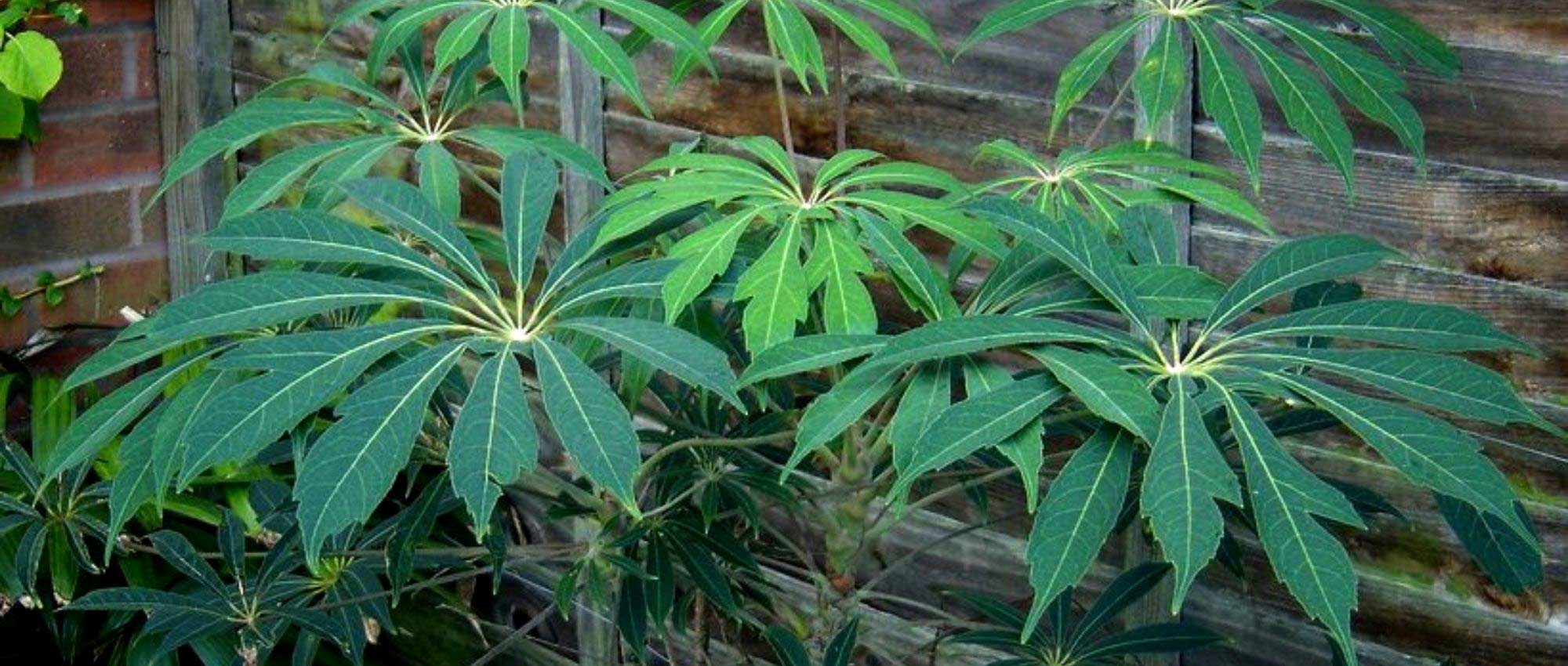
Outdoor Schefflera: planting, growing and care
Contents
Schefflera in a nutshell
- Although known as an indoor plant, Schefflera includes some hardy species that can be planted in open ground!
- It is prized for its superb palmate foliage, divided into long, dark-green leaflets
- Ideal for creating an exotic or jungle garden!
- It thrives in shade or partial shade, in cool, humus-bearing soil
- Some species tolerate down to −10, even −15 °C
A word from our expert
Schefflera – sometimes misspelt Sheflera – is best known as an indoor plant, which adorns offices, flats and houses with its superb foliage, however, some species are hardy enough to be grown outdoors! I will not discuss here Schefflera arboricola or Schefflera actinophylla, grown here as houseplants. These include Schefflera taiwaniana, S. delavayi, S. chapana, S. rhododendrifolia… which can generally withstand down to −10 °C, sometimes down to −15 °C depending on species! Schefflera are indispensable for their lush foliage, often dark green and glossy. Their leaves are large and palmate, divided into fine leaflets.
They are plants that prefer a cool, shaded position. They will easily find a place in a woodland garden, where they will benefit from a sheltered position, protected from direct sun and wind. Schefflera are perfect for creating a tropical jungle alongside other exotic, hardy plants, such as Tetrapanax, Fatsia japonica, bamboos, ferns, etc. They are also suitable for a town garden, creating a modern, graphic atmosphere, for example in a patio or courtyard. They like fertile, loose, airy soils, and do not appreciate calcareous substrates. Overall, they require fairly little maintenance.
Botany
Botanical data
- Latin name Schefflera sp.
- Family Araliaceae
- Common name Schefflera
- Flowering summer
- Height up to 3 m
- Exposure shade or partial shade
- Soil type loose, humus-bearing, cool and well-drained
- Hardiness down to −10 °C for some species
Scheffleras comprise nearly 600 species of bush, trees and lianas, with evergreen foliage. Those found in cultivation are mostly bush species. They grow mainly in Southeast Asia, Central America and Pacific islands. Most cultivated species originate from Asia (China, Taiwan, Vietnam…).
Indoors, most commonly grown are Schefflera actinophylla and Schefflera arboricola. Horticultural varieties with variegated leaves are often available, for example green foliage maculate with cream-yellow spots. Among hardy Scheffleras suitable for outdoor planting, the most frequent species are Schefflera delavayi, S. taiwaniana, S. rhododendrifolia, S. chapana…
Outdoor Scheffleras have a wilder, more natural aspect than those used as houseplants, which have very glossy, leathery leaves and can look more artificial.
Hardy Scheffleras are generally species that, in their native range, occur at altitude, in mountainous regions. They therefore tolerate cold better than lowland varieties. Scheffleras are mostly encountered in forest, in cool, shaded medium. Some grow directly on rock walls, and there are also epiphytic species that grow on other trees. As its name indicates, Schefflera taiwaniana is native to Taiwan, where it grows in conifer forests between 2,000 and 3,000 metres altitude. Schefflera delavayi comes from southern China and northern Vietnam, in mountain forests.
In France, outdoor cultivation of these hardy Scheffleras is still recent and not widespread, and experience of their cold resistance remains limited. Generally, they tolerate down to −10, even −12 °C, but some species could be even more resistant in reality.
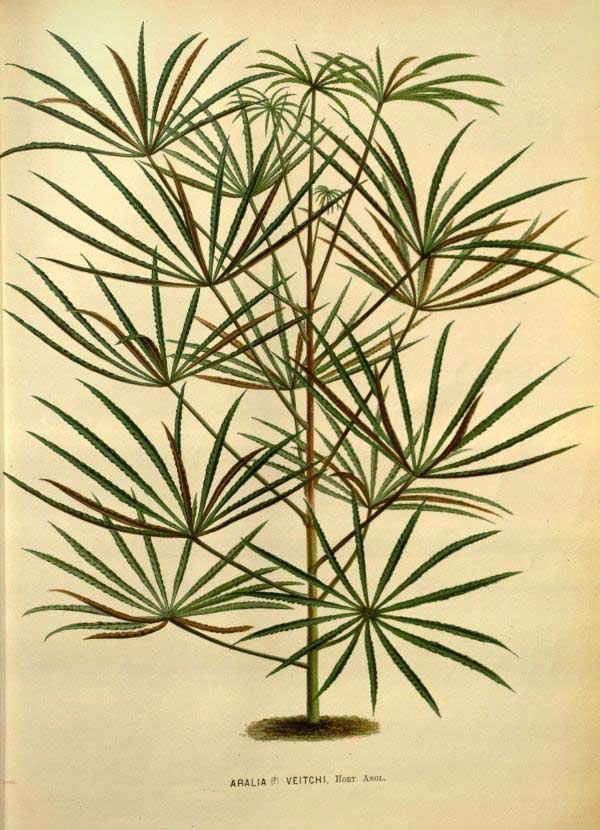
Schefflera veitchii: Botany illustration
Scheffleras belong to family Araliaceae. This large family (more than 1,500 species) takes its name from Aralia, whose species Aralia elata forms a superb tree with large divided leaves, sometimes grown in gardens. Araliaceae also include other ornamental plants such as Fatsia, Cussonia, Pseudopanax, or Tetrapanax papyrifera. Fatsia leaves resemble those of Schefflera: they are palmate, bright green, but their lamina is less divided. Plants in family Araliaceae offer lush growth, often large green leaves. They are grown more for their foliage than for their flowering. It is also family of ivy, Hedera helix.
Scheffleras were named in honour of Polish botanist and physicist Johann Peter Ernst von Scheffler (1739–1809).
Scheffleras are vigorous plants that develop a graphic, airy silhouette. They have an erect habit and can reach 3 metres in height. Shape of the bush and its foliage evoke an umbrella, which has earned it the nickname « Umbrella tree » (Umbrella plant).
When young, Scheffleras usually have only a few leaflets per leaf, but number increases as tree ages, while leaves enlarge.
Scheffleras are valued for their finely divided foliage, giving a very exotic style. Leaves are large, palmate and can bear up to 30 leaflets (but it depends on species grown!). More commonly a leaf has between 7 and 15 leaflets. Leaflets are elongated, lanceolate, each petiolate and attached to centre of leaf by a small stalk. Schefflera delavayi bears very attractive leaflets, more or less cut along lamina margin. In Schefflera taiwaniana, young leaves are covered with white or silvery hairs, while older leaves are smooth.
Each leaf is attached to centre of bush by a very long petiole (up to 50 cm), giving plant a relatively supple habit. Thus foliage is not dense but very light and airy, allowing sight to pass through. Petioles are red or purplish in Schefflera taiwaniana.
Leaves of Schefflera are mostly dark green, although some horticultural varieties (mainly among houseplant species) offer variegated foliage of yellow or cream-white. Leaves are thick and glossy.
Schefflera foliage is evergreen. Plant does not go completely dormant in winter; it keeps foliage and continues to grow, a little more slowly.

Flowering of Schefflera delavayi: overall view and close-up (photos: Wendy Cutler), and that of Schefflera actinophylla
Schefflera generally flowers in summer, between June and August, sometimes in autumn or winter. It then produces paniculate inflorescences of cream-white flowers, sometimes yellow or even red in some species. Flowers are tiny but gathered in large numbers on inflorescences. However, Schefflera is cultivated more for its foliage than for its flowering.
Schefflera delavayi offers a fairly spectacular flowering, carrying large terminal, ramified inflorescences of cream-white colour, measuring up to 50 cm in length at most.
Schefflera fruits are rounded drupes, orange, purple or black.
Schefflera varieties
Most popular varieties
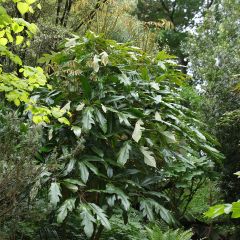
Schefflera delavayi
- Flowering time July to September
- Height at maturity 2,50 m

Schefflera taiwaniana
- Flowering time July to September
- Height at maturity 3 m
Discover other Schefflera
View all →Available in 1 sizes
Available in 1 sizes
Available in 1 sizes
Planting
Where to plant?
Schefflera grows naturally in forest and prefers cool, shaded conditions. In the garden, place in shade or partial shade; avoid full sun, which can scorch foliage. Position should nevertheless be fairly bright. Preferably place sheltered from cold winds.
Schefflera likes cool, well-draining, light soils rich in humus. Ideally a forest-type soil, such as found in understorey. Schefflera thrives in slightly acidic substrates and dislikes calcareous soils.
Schefflera is ideal in an understorey garden, where it will bring a touch of the exotic. It can create a jungle feel… especially if paired with other plants with generous foliage: ferns, Tetrapanax, bamboos, Fatsia, Astilboides tabularis… Schefflera will help create an exotic, transportive atmosphere! It can also find a place in a patio or courtyard, a spot offering shade and protection from cold winds. Pair with ferns, hostas, horsetails…
When to plant?
We recommend planting Schefflera in spring, around April–May.
How to plant?
- Start by placing the rootball in a basin of water, to allow it to rehydrate and encourage establishment.
- Dig a large planting hole. It should be two to three times the size of the rootball.
- Add some well-rotted compost to the bottom, mixed with garden soil. This will enrich the soil and feed Schefflera.
- Take the rootball and loosen it slightly by scraping soil from the outside and freeing some roots. Then plant your Schefflera, ensuring the soil level matches the level in the original pot.
- Backfill with soil around the rootball and firm lightly.
- Water generously.
Continue watering in the weeks after planting, until Schefflera is well established. You can add a layer of mulch around it made of fallen leaves or ramial chipped wood (RCW), a few centimetres thick. This helps keep soil cool for longer, and the mulch will gradually enrich the soil as it decomposes.
You can also plant Schefflera in a pot and place it, for example, on a terrace or in an inner courtyard.
- Choose a large pot and place a layer of clay pebbles or gravel at the bottom.
- Fill the pot with a mix of leaf mould and garden soil, with a little coarse sand for drainage.
- Plant your Schefflera.
- Backfill with some potting mix around the rootball.
- Water generously.
- Place the pot in a shaded spot, sheltered from wind.
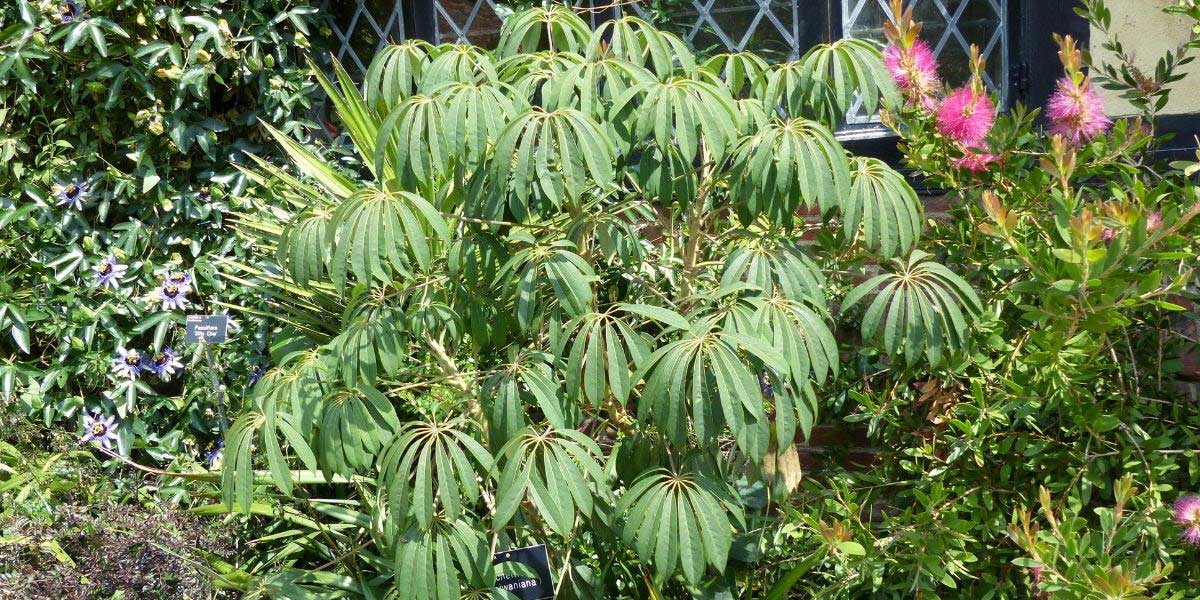
Schefflera taiwaniana
Care
We recommend watering regularly during first year, while your Schefflera becomes well established. Afterwards, water only during dry periods. Preferably use rainwater rather than tap water, which may be too hard for Schefflera.
It is also advisable to lay a layer of mulch around the bush to keep soil cool and limit growth of weeds.
To maintain a rich, fertile substrate that meets Schefflera’s nutritional needs, occasionally add some well-rotted compost at the base of the bush, and incorporate it lightly into topsoil with a gentle fork-over.
Young plants may need winter protection. Mature plants are more cold-resistant.
Pruning is not necessary for Schefflera, but you may choose to prune if you want to encourage it to branch and develop a stockier habit (for a very leggy young plant bare at the base), or if you want to limit its growth due to lack of space, for example. Carry out pruning in autumn, around September–October.
Multiplication
Schefflera can be multiplied by sowing, propagation by cuttings or air layering.
Sowing
Best time to sow Schefflera is spring.
- Soak seeds overnight in warm water.
- Prepare a pot with seed compost.
- Remove seeds from water, place them on substrate, then cover lightly with a thin layer of compost.
- Water with a fine mist.
- Then place pot in a bright spot, out of direct sunlight, at a temperature between 20 and 25 °C.
Ensure substrate remains slightly moist until germination. Pot on young shoots into individual pots one month after germination.
Propagation by cuttings
Schefflera can also be multiplied by propagation by cuttings.
- Prepare a pot by filling it with potting compost, then water until thoroughly moist.
- Take a cutting of 15 to 30 cm from a terminal shoot or a stem segment. Use a clean, sterilised knife to avoid transmitting diseases.
- Reduce foliar surface by cutting each leaflet in half.
- Make a hole in substrate using a pencil or small stick.
- Optionally dip base of cutting in plant hormone (facultative), then place cutting into hole and firm substrate around it to avoid air pockets.
- Place cutting under cover (for example a bottle or plastic bag over the pot) to create a humidity‑saturated atmosphere.
→ See also our tutorial: How to take a cutting of Schefflera
Association
Schefflera is an ideal bush for creating a jungle garden! Plant it in the understorey, with other plants offering exuberant foliage. Choose, for example, tree ferns, giant hostas, Fatsia japonica, Astilboides tabularis, Colocasia, Tetrapanax papyrifera, Hedychium… Enjoy also Arisaema, Asian perennial plants that produce a surprising spathe-shaped flowering and very graphic, dark green leaves. Discover Datisca cannabina, a monumental perennial with dissected, generous foliage. Include climbing plants and lianas, such as Akebia quinata, which offers attractive five-leaflet foliage and an original, fragrant spring flowering. All these plants will create a lush, refreshing atmosphere!
For more ideas and inspiration, discover Ingrid’s article on our blog: “10 exotic and hardy plants for jungle garden”
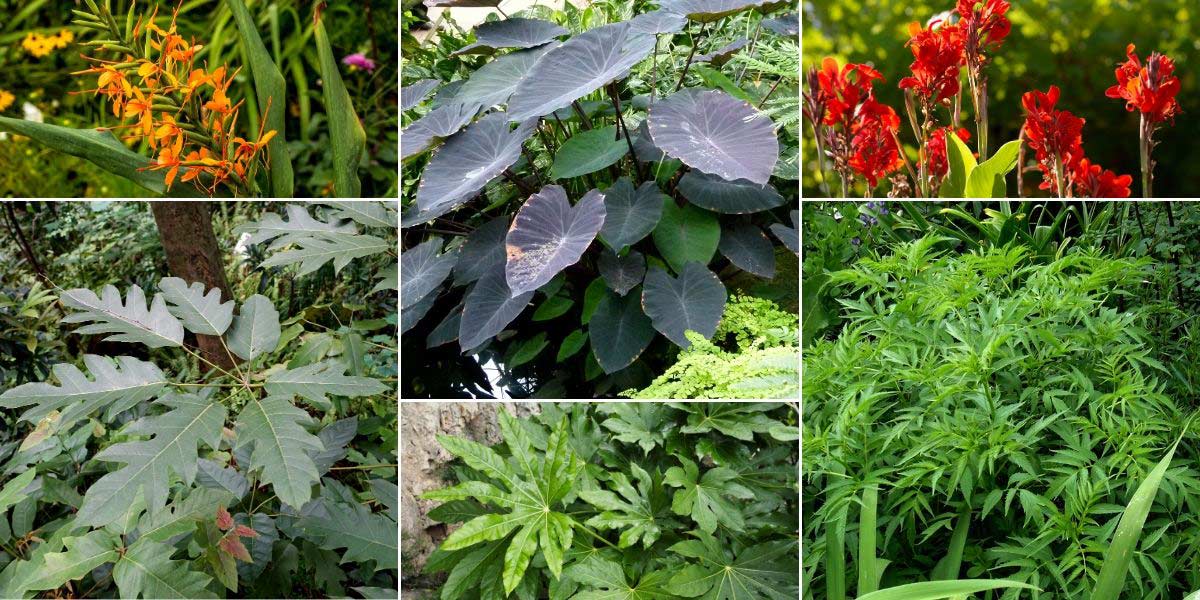
Schefflera is ideal for composing an exotic garden, with plants with luxuriant foliage and flowers in vivid colours. Hedychium coccineum ‘Tara’ (photo Esin Üstün), Schefflera delavayi, Colocasia ‘Black Magic’ (photo J. Rebel), Fatsia japonica, Canna ‘Brilliant’ (photo iBulb – Steven Bemelman), and Datisca cannabina (photo peganum)
Schefflera will also find a place in a patio or courtyard. It will benefit from a position sheltered from wind and direct sunlight. This will allow you to create a small shady garden, with horsetails, bamboos, dwarf palms, Japanese maples… Also include ferns, such as Athyrium niponicum or Dryopteris cycadina. Along borders, you can plant Ophiopogon planiscapus, a small perennial whose fine foliage makes it resemble a grass. For Schefflera, we recommend the species S. taiwaniana, its particularly graphic foliage making it perfect for composing a modern atmosphere in a city garden.
→ Discover 5 other ideas for pairing with Schefflera in our advice sheet!
Useful resources
-
- Discover our outdoor Schefflera
- Our advice sheet: “10 original bushes that won’t go unnoticed”
Frequently asked questions
-
My Schefflera is losing its leaves — what should I do?
If its leaves fall, it may have suffered from lack of watering. Check that the substrate is not too dry. Conversely, it can also be caused by excessive moisture and asphyxiation relating to root. We recommend letting the substrate dry out between waterings before watering again. If your Schefflera is in a pot, take care not to let water stagnate in the saucer.
-
My Schefflera seems weak and is not putting out shoots. What should I do?
It may be lacking nutrients. If it's in a pot, you can repot it and give it a slow-release fertiliser. If planted in the ground, add well-rotted compost.
-
My Schefflera has a slender habit, is sparsely ramified and has very airy foliage.
It probably has too much shade, not enough light. Thus, it seeks light by producing long internodes and sparse foliage. You can move it to a brighter spot. You can also carry out pruning to encourage it to become ramified.
- Subscribe!
- Contents
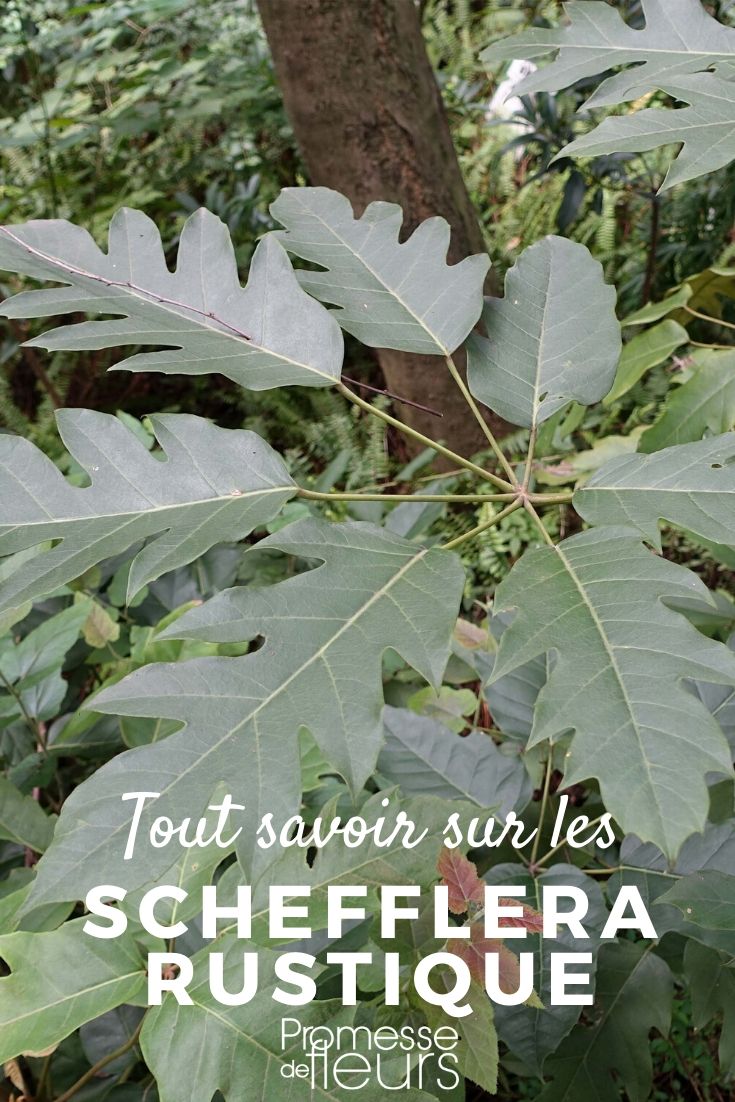

































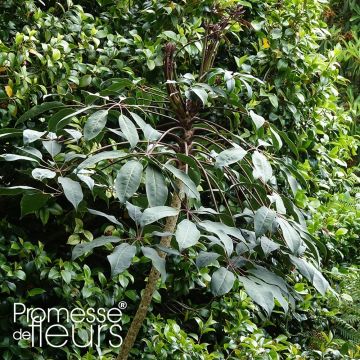
Comments